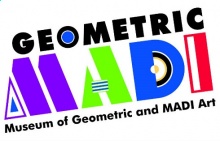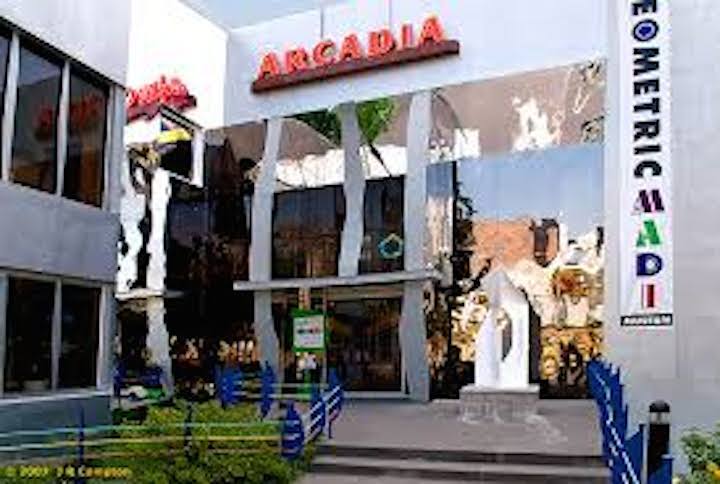Geometric and MADI art have their roots in the work of Malevich and other Russian revolutionary artists of 1917. These artists eschewed figurative art. Although they were driven underground in the...
Geometric and MADI art have their roots in the work of Malevich and other Russian revolutionary artists of 1917. These artists eschewed figurative art. Although they were driven underground in the Stalinist era, their ideas survived in the art of expatriates like Kandinsky and Gabo, and in the work of Europeans including Mondrian and Herbin. Torres-Garcia brought the ideas of Seuphor and Herbin back to his native Uruguay.
In Montevideo, Torres-Garcia persuaded his pupil Carmelo Arden Quin to try his wings with his own ideas. Thus in Buenos Aires in 1946, Carmelo, with the help of Gyula Kosice, Rhod Rothfuss, Martin Blaszko and others, launched the MADI movement. MADI art is always non-figurative and geometric, and characterized by non-square, asymmetrical shapes that are often wall reliefs or sculptures.
The opening of the MADI Museum in Dallas in 2003 featured Carmelo Arden Quin and his MADI followers. These works, plus others acquired since then, became the permanent collection of the Museum. Works of Martin Blaszko, Gyula Kosice, Diji Laan, Gina Ionesco, Enio Iommi and Rhod Rothfuss, all in the original Buenos Aires exhibit of 1946 have since been added.
Each year the Museum mounts several important exhibits. In 2003, Venezuelan artists including Soto and Cruz-Diez were featured. In 2004, it showed the work of U.S. MADI artists, including Betty Gold and Oscar D’Amico, both of whose works were bought by the Reina Sofia Museum in Madrid. Next came an Auguste Herbin retrospective and Mitsouko Mori of Japan became the Museum’s Artist in Residence, enriching the education program.
The education program consists of docent-led tours, artist lectures, and classes in constructing MADI art. In 2006 Natasha and Tatiana Kolodzei gave well-attended lectures on their collection of Russian art, which was shown as part of “Historic MADI: Its roots: from Russia through Uruguay to Argentina.” Also in 2006 Argentine sculptor and founding MADI artist Martin Blaszko gave lectures entitled “Monumental Sculpture and Society” and “What is Quality in Art” as part of a Blaszko/Vardanega Exhibit.
MADI collage workshops for seniors and for students were first funded in 2004 with a $12,000 grant by the Lawrence and Susan Hirsch Foundation. Participants are encouraged to experiment with balance form, line, space and color in order to create an original design. A short history of MADI is given to show the diversity of cultures the art embraces: there are many Latino artists, plus artists from France, Italy, Hungary Japan and elsewhere. Students learn the difference between figurative and non-representational art.
“Eighty Artists from Twenty Countries” paid homage to 90-year-old Carmelo Arden Quin in 2005. The festivities included a book signing by Shelley Goodman, author of a biography of Arden Quin. Later, with the co-sponsorship of “Voices of Change”, a MADI tri, led by Guillermo Gregorio (from Argentina, now residing in Chicago) presented an afternoon of avant-garde MADI music in the Museum.
In 2007 the Museum brought Mexican artist Alonso de Alba to Dallas to conduct printmaking classes, which were taught at the Latino Cultural Center. The Center also borrowed one work by each of our Latino MADI artists for a show at their Museum. In the fall of 2007 the Museum changed its name to “Museum of Geometric and MADI Art” to better reflect the diversity of its offerings. It also added the neon “Arcadia” sign to its façade and began adding outdoor sculptures, including those by Betty Gold and Morton Rachofsky.
Arcadia Salons were initiated to provide a platform for artists and others to discuss the art of the 20th and 21st centuries. Artists from France, Slovakia, Italy, Venezuela and Argentina, as well as curators and art experts from Russia and Dallas-Ft. Worth have led excellent discussions. Argentine tango singers and dancers have enlivened evenings, along with the piano music of our own Pat Canning.
The Museum continues to host exhibits of the work of many local artists, alongside those from around the world.




COMMENTS